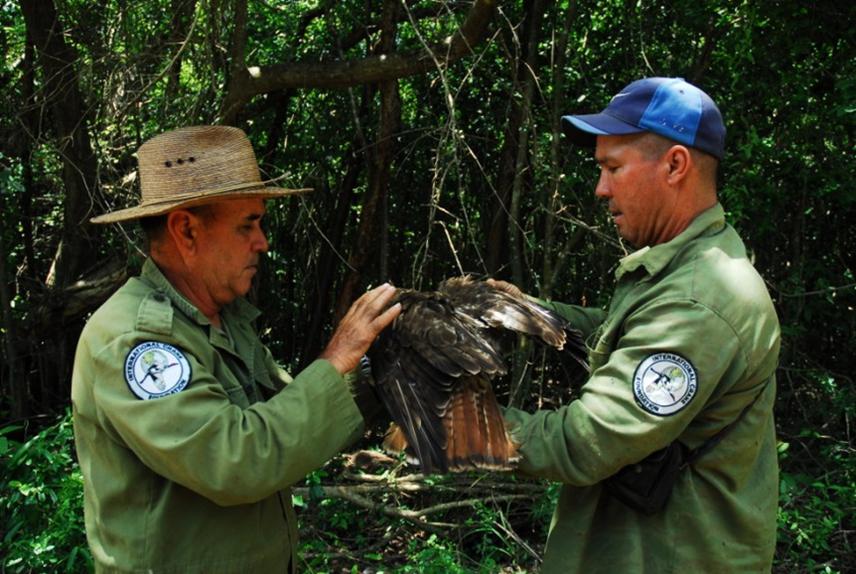Yarelys Ferrer Sánchez
Other projects
20 Sep 2011
Status and Conservation Strategy of Cuban Diurnal Raptors of a Ramsar Site in Cuba
17 Feb 2015
Status and Conservation Strategy of Diurnal Raptors of a Wetland in Cuba. Phase III
Our objective is to continue with the aims and activities of the first RSG, by extending the work to the tourism and agriculture sectors.

Training of protected area staff on manipulation techniques of birds.
Raptors are key species in ecosystems. Nevertheless, endemic species confront extinction risk, habitat loss, chick theft, lack of knowledge, and there are limited human resources available to provide environmental education. In addition, there is inadequate understanding about raptor’s natural history in order to accomplish species conservation. We will involve training the tourism sector, builders, farmers, communities and schools the high value of biodiversity, endemic species and raptors in the ecosystems, as well as the need to protect them. At the same time we’ll continue our work on educating human capacities to better understand and regulate human activities in order to mitigate impacts these activities have on natural habitats. Environmental education and training will increase knowledge and awareness to insure raptor conservation. Our proposal will achieve a change in local people conscience related to the safeguard of raptors. These actions will contribute to the conservation of the whole ecosystem, using raptors as an example for the need to protect threatened endemic species in general.
We will continue obtaining and providing information on ecology, status, productivity of the raptors, mainly focused on endemic and endangered species, population decreasing and potential distribution; measure the amount of historical distribution changes of endemic and threatened species and its current suitable areas. Anthropogenic and environmental variables that regulate the species occurrence will be determined as well as its importance. Simultaneously, we will continue with the estimation of raptors’ occupation areas, which could be used for assessments in the effectiveness of protected areas. Suitable distribution maps and lists of reproductive areas inside and/or outside of the protected areas will be generated. All this generated information will be used in the protection and in a vigilance program of species in order to improve management strategies. The implementation of Knowledge about several biological aspects of raptors will increase quality of conservation strategies.